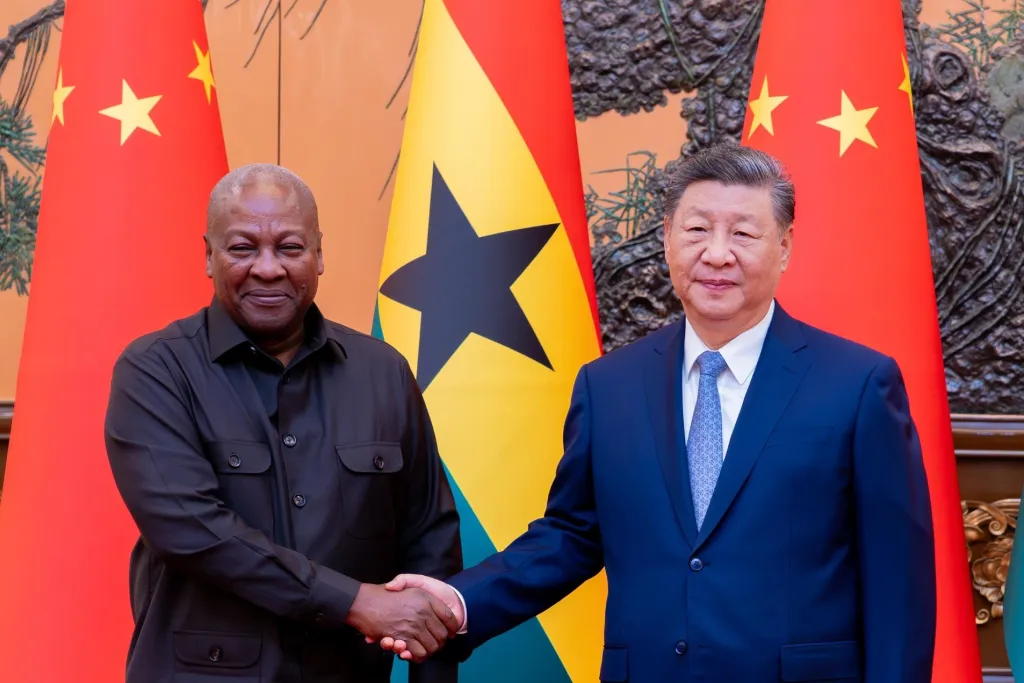Copyright thebftonline

By Confidence AKPLOME On October 14, 2025, President John Dramani Mahama, made a bold announcement: Ghana and China will finalise a zero-tariff trade agreement by the end of the month. The news drew applause across business circles; finally, a chance to push Ghanaian goods into the world’s second-largest economy, tariff-free! But behind the applause lies a harder question: are we ready? A deal like this could transform Ghana’s trade landscape. It promises to open Chinese markets to Ghanaian exports, attract manufacturing investments, and boost industrial capacity. Yet, it could also expose gaps in competitiveness, policy coordination, and production readiness. To understand what this really means, we must look at the bigger picture. Where Ghana has been, what we’ve learned from other trade agreements, and whether this time we’re prepared to seize the opportunity. The Context: China’s Expanding Trade Diplomacy China’s trade diplomacy in Africa isn’t new. From railways in Ethiopia to special economic zones in Zambia, Beijing has long used infrastructure and trade incentives to deepen ties across the continent. The zero-tariff initiative, which now covers 53 African countries, is part of this broader effort of opening Chinese markets to goods from developing economies while strengthening economic and political relations. For Ghana, the timing is significant. Bilateral trade with China reached over $11 billion in 2023, up from about $6 billion a decade earlier. But the trade balance tells a different story. Ghana exported roughly $1.38 billion worth of goods to China - mainly gold, crude oil, and manganese - while imports from China exceeded $3 billion. These imports were largely electronics, machinery, and manufactured goods. That imbalance highlights a long-standing structural issue: Ghana sells raw materials and buys finished goods. The Opportunity: Diversification and Market Access Zero tariffs could help shift that balance. By removing import duties on Ghanaian goods entering China, the deal could make exports like cocoa products, fruits, textiles, and light-manufactured goods more competitive in the Chinese market. Imagine Ghanaian-made chocolate bars on supermarket shelves in Shanghai, or shea butter from Tamale featured in Chinese beauty chains. Agro-processing and light manufacturing firms could find new demand, while foreign investors might see Ghana as a production base for exports into China. Such a move could also align with Ghana’s industrialisation agenda of encouraging value addition and job creation in sectors that have historically lagged. If implemented strategically, this agreement could help Ghana climb the value chain and easily move from being a raw material supplier to becoming a manufacturer of finished goods. The Challenge: Capacity and Competitiveness Opportunity alone doesn’t guarantee results. Ghana’s export structure remains heavily tilted toward primary commodities. In 2023, mineral exports accounted for nearly two-thirds of the total export value to China, while processed or manufactured goods made up less than 5%. This raises concerns about readiness. Many small and medium enterprises (SMEs), the ones most likely to benefit from tariff preferences, struggle with limited access to trade finance, certifications, logistics infrastructure, and compliance with Chinese quality standards. Without targeted support, the benefits of this deal could remain largely theoretical. And while Ghana works to expand exports, imports from China may grow faster, particularly in sectors where local producers cannot compete. That could widen the trade deficit further, putting more pressure on the cedi and local manufacturing. Tariff-free doesn’t mean friction-free. Learning from Other Trade Arrangements This isn’t Ghana’s first experience with preferential trade access. Under the African Continental Free Trade Area (AfCFTA), Ghana already enjoys tariff-free trade with many African markets. Yet, intra-African trade still accounts for just 15% of Ghana’s total exports. Similarly, the Economic Partnership Agreement (EPA) with the European Union provides duty-free access for Ghanaian products, but non-tariff barriers like strict product standards and limited export diversification have constrained performance. This clearly tells us that market access alone doesn’t drive export growth. Competitiveness, capacity, and consistency do. The Finance Perspective: Beyond Trade Volumes From a finance standpoint, the zero-tariff agreement could have macroeconomic implications. If we as a country successfully expand value-added exports, it could generate hundreds of millions in additional foreign exchange inflows. That would ease pressure on the cedi, improve external reserves, and strengthen the country’s balance of payments. However, if imports continue to outpace exports, the reverse could happen. Our current account deficit could quickly widen. Making Ghana more dependent on external borrowing. That’s why trade policy cannot be separated from industrial policy and fiscal management. A zero-tariff deal is a tool whose impact depends on how we use it. The Way Forward: Strategy Over Sentiment For Ghana, success will depend on turning this policy opportunity into productive capacity. That means: Investing in value addition: We can’t keep exporting raw materials and expect different results. From cocoa to cashew and shea butter, Ghana must push further into processing and packaging. Setting up more agro-industrial zones and supporting local processors can help retain more value and create jobs at home. Upgrading trade infrastructure: Efficient trade needs strong logistics. Exporters still face high transport and port costs that eat into margins. Improving roads, ports, and cold storage systems, especially for perishable goods, will make Ghanaian exports more reliable and attractive in competitive markets like China. Empowering SMEs: Many small and medium exporters have the ideas but lack financing and technical support. Expanding export credit, capacity-building, and quality certification programs can help them meet global standards and tap into the zero-tariff window effectively Attracting the right investment: The deal could also be a magnet for investors. If Ghana positions itself as a manufacturing hub for exports into China, it could attract companies looking for lower production costs and trade access. But this requires clear policies that favour industries creating local value and skills, not just resource extraction. If implemented cohesively, these measures could redefine Ghana’s position in the China–Africa trade dynamic, moving us from a supplier of raw materials to a partner in production. However, this requires coordination between ministries, regulators, financiers, and industry. In other words, this requires an economic strategy. A Mirror for Readiness The Ghana–China zero-tariff deal reflects two truths. The world still sees enormous potential in Ghana Turning that potential into prosperity is entirely in our hands. Tariffs can be lifted overnight, but competitiveness takes years to build. That journey depends on how we channel this opportunity, whether we focus on short-term exports or build the foundations of long-term industrial growth. If we invest in productive capacity, coordination, and industrial depth, this agreement could signal the start of a new export era. One defined by value addition, stronger supply chains, and resilient local enterprises. Yet if we treat it as just another trade headline, we risk repeating old patterns of celebrating access while importing the very future we should be producing. The choice is ours to make. Trade potential for progress, or to let opportunity pass us by.



